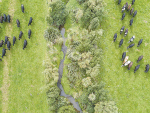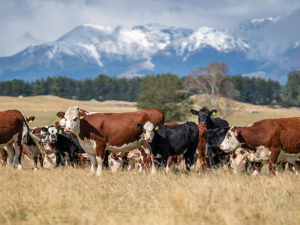The Fertiliser Quality Council, (FQC), has released an on-line video clip (www.fertqual.co.nz) on the benefits of precise spreading of ethical fertilisers.
Titled 'Why Spreadmark' it demonstrates the environmental and economic benefits of using Spreadmark accredited fertiliser spreaders. Spreadmark spreaders are trained and have the proper equipment and systems to spread fertilisers precisely, the council says.
FQC chair Neil Barton says "farmers would be bloody silly not to use Spreadmark fertiliser spreaders. Massey research has shown that on a dairy farm a bad spreading job can cost a farmer up to $60 a hectare in lost production."
"When you consider that spreading only costs between $8 and $12 a hectare; going for a cheap job and uneven spread is false economy.
"Spreadmark spreaders spend a huge amount of time and money getting properly qualified. The drivers are all trained both on the paddock and in the classroom. In addition their trucks spreading patterns are scientifically measured to ensure an even spread. Finally the Spreadmark companies systems are audited to ensure they are robust. They are true professionals.
"Farmers are also given a precise printout of where the truck has driven and the fertiliser has been spread. It guarantees the maximum benefit for the fertiliser dollar."
What is also important are the environmental benefits of using Spreadmark spreaders. Local authorities can be assured that fertiliser meant for the paddock is put on the paddock and not on the neighbour's place, a road, or worse still a waterway.
The FQC position on fertiliser and its application is extremely simple and can be summarised in four steps. First a farmer needs to soil test to ascertain what nutrients are required and where. Second a proper nutrient management plan such as Overseer should be used. Finally a farmer should only use ethical Fertmark fertilisers spread by Spreadmark accredited operators.
"When that all happens the right fertiliser is put on the correct place with no environmental cost," Neil Barton says. "The most important fact to remember is that if we don't apply fertiliser we are mining our soil with all the negative connotations that has."











